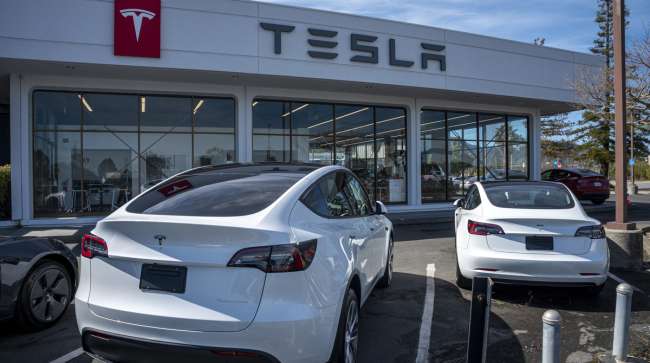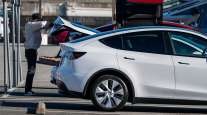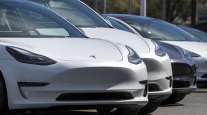Bloomberg News
Tesla Sales Decline for First Time in More Than a Decade

[Stay on top of transportation news: Get TTNews in your inbox.]
Tesla Inc.’s annual vehicle sales dropped for the first time in more than a decade despite a year-end push that sent deliveries to a record in the fourth quarter.
The Elon Musk-led company sold 1.79 million vehicles last year, it said Jan. 2, which was slightly less than what it delivered in 2023 and also below analysts’ consensus estimate.
The results offer a sobering reminder of the real-world challenges for EV makers, even as hype around driverless cars and Musk’s closeness with President-elect Donald Trump have sent Tesla’s stock soaring in recent months. Lukewarm consumer demand is weighing on sales of electric cars, an issue that could be exacerbated by Trump’s push to rein in EV incentives.
Tesla’s shares sank after the results, falling 5.8% as of 10:49 a.m. in New York. The stock rose 63% in 2024.
For the quarter ended Dec. 31, it delivered 495,570 vehicles, missing the 512,277 analysts had projected. It needed to sell nearly 515,000 vehicles in the quarter to meet its goal for “slight” growth in the full year.
In a note to clients, Barclay’s analyst Dan Levy wrote that the data offered “no change to narrative, but reinforces challenge for ’25 growth on existing models, reliance on still unknown Model 2.5.”
Tesla faced a series of setbacks in 2024, including an arson attack at its Berlin factory, shipping diversions and an industry-wide slowdown in EV sales. And it has told investors that demand for its all-electrics is between two major growth waves. In April, the Austin-based automaker cut more than 10% of its workforce, including sales staff.
Even so, Tesla said as recently as October that it expected to achieve modest growth in its deliveries for all of 2024. The EV maker had pushed a myriad of deals related to financing, charging and leases to end-of-year buyers.
2025 Projection
Musk told investors on Tesla’s latest earnings call that he sees 20% to 30% growth this year, fueled in part by a more affordable vehicle expected to be unveiled in the first half and on the company’s autonomous technology. The EV maker has said little about what that new vehicle will look like or what its price will be.
There is already some doubt over the company’s ability to achieve Musk’s 2025 growth objective, particularly if EV tax credits are rolled back under Trump. The president-elect has been critical of Joe Biden-era EV policies and the EV tax credit, which Musk claimed in July would hurt Tesla in the near term — but hurt Tesla’s competitors more.
At the same time, Trump also is expected to loosen federal rules on self-driving vehicles, which could benefit Tesla and its robotaxi ambitions. Musk was a top Republican donor in 2024 and has become part of Trump’s inner circle of advisers.
Experts from Sailun Tires dive into strategies for managing tire expenses amid a challenging freight market. Tune in above or by going to RoadSigns.ttnews.com.
Meanwhile, Chinese competitor BYD Co. sold 4.25 million passenger EV and plug-in gas-electric hybrid models last year, narrowing its gap with Tesla as the top electric-vehicle maker.
The carmaker’s combined Model 3 and Model Y vehicle sales category accounted for 471,930 deliveries in the fourth quarter. It also reported that its “other models” category, which includes vehicles such as the Model X, S and Cybertruck saw 23,640 deliveries. It has said that the U.S. and China are its top two markets globally.
Tesla’s Cybertruck drew headlines this week after one of the vehicles exploded outside a Trump hotel in Las Vegas, killing the driver and injuring several others. The Federal Bureau of Investigation is probing the incident and exploring whether there are links with an attack in New Orleans several hours earlier that killed at least 15 people.
Musk said on social media that Tesla determined the Las Vegas blast was caused by something in the bed of the truck and was “unrelated to the vehicle itself.”
Tesla also reported an annual record for its energy business, saying it deployed 31.4 gigawatt hours in 2024, including 11 gigawatt hours in the fourth quarter. The company had already managed to deploy more energy products in the first nine months of the year than the 14.7 gigawatt hours in all of 2023.
Want more news? Listen to today's daily briefing below or go here for more info:





